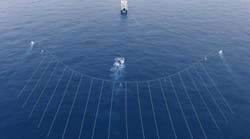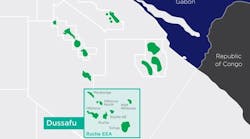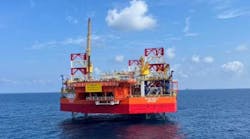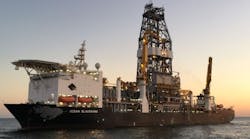Editor's note: This Data section first appeared in the July-August issue of Offshore magazine. Click here to view the full issue.
Offshore rig drilling count up YoY
The number of rigs drilling in June 2023 is up markedly from June 2022, but there are other signs that the strong market conditions will continue. The warm-stacked rig count has declined about 40% as idle units continue to pick up work. Also, some of the newbuilds that had been stranded at shipyards during the downturn have found new owners as well as maiden assignments. Furthermore, the number of rigs in the repair/SPS category, which includes units undergoing reactivation, has also increased, as formerly stacked rigs are being prepared to return to work. Another 67 rigs not under contract have future charters in place.—Esgian
Norway highly attractive for intervention
In terms of offshore markets, 618 assets are highly attractive for intervention. Norway and Australia stand out with 36% and 25%, respectively, while the UK scored an average of 3.05 because of the 91 wells likely to be involved in intervention activities.—Rystad Energy
Harsh environment semisub market sells out
In just six months, committed utilization of marketed sixth-generation harsh environment semisubmersibles has jumped 14% and is now sold out at 100% utilization; a figure not recorded for this fleet since February 2014. Committed utilization includes rigs on hire or have an upcoming contract. Appropriately, day rates for recent contract fixtures have also risen, with some well above $400,000; a phenomenon not witnessed since 2015. This fleet is made up of 27 active rigs, all of which are either on hire or have a contract starting in the future.—Westwood Global Energy Group












